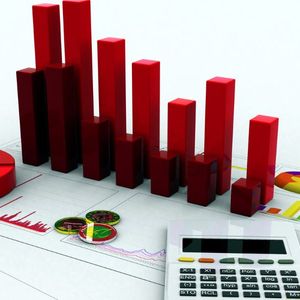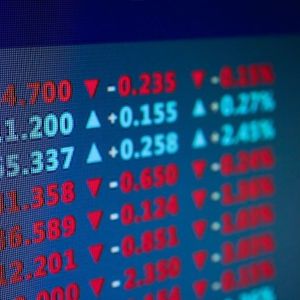In a dramatic turn of events in the Forex market, the Australian Dollar (AUD) has experienced a significant surge against the US Dollar (USD), reaching its highest levels since December. This impressive climb is primarily attributed to unexpected USD weakness, triggered by disappointing US economic data and a shift in market sentiment regarding future Federal Reserve actions. For cryptocurrency enthusiasts and investors tracking global financial trends, these Forex movements offer valuable insights into broader market dynamics and risk appetite. Let’s dive into the key factors propelling the Aussie Dollar’s ascent and what it means for the currency market. Decoding the Australian Dollar’s Stunning Rise Amidst USD Weakness The Australian Dollar’s (AUD) recent strength is primarily a story of USD weakness. Several factors have converged to weaken the US Dollar, paving the way for the Aussie to shine. Let’s break down the key drivers: US Retail Sales Miss: January’s US Retail Sales figures were shockingly weak, contracting by 0.9% month-over-month, significantly missing the -0.1% forecast. This disappointing data ignited concerns about a potential slowdown in the US economy, prompting investors to reassess their USD holdings. Tariff Delay Relief: US President Trump’s decision to postpone the implementation of reciprocal tariffs offered temporary relief to risk-sensitive currencies like the Australian Dollar. This move eased immediate concerns about escalating global trade tensions, boosting risk appetite and benefiting the AUD. Fed Rate Pause Expectations: The weak Retail Sales data has led to increased speculation that the Federal Reserve might hold off on further interest rate hikes in March. Market participants are now pricing in a higher probability (around 55%) of rates remaining on hold, reducing the appeal of the USD, which typically benefits from higher interest rate expectations. While US Industrial Production showed a modest 0.5% increase in January, slightly beating estimates, the negative Retail Sales data overshadowed this positive figure, reinforcing concerns about the health of the US economy and further contributing to USD weakness . Forex News : Aussie Dollar’s Momentum and Technical Outlook From a technical perspective, the AUD/USD pair is exhibiting bullish momentum. Having gained 0.65% to reach 0.6355, the pair has decisively broken above its 20-day Simple Moving Average (SMA), a key indicator of short-term trend. Key technical indicators further support this bullish outlook: Relative Strength Index (RSI): The RSI currently sits at 66, nearing overbought territory but still trending upwards. This indicates strong buying pressure and suggests further potential for upward movement in the AUD/USD pair. Moving Average Convergence Divergence (MACD): The MACD histogram is showing increasing green bars, a clear sign of building upside momentum. This reinforces the bullish sentiment and suggests that the upward trend is likely to continue in the near term. However, traders remain vigilant. The market is still sensitive to potential shifts, especially concerning new tariff announcements and any unexpected positive US economic data surprises, which could swiftly reverse the current trend and impact the Currency Market . Australian Dollar vs. RBA Rate Cut Speculation Despite the Aussie’s recent strength, domestic factors are still at play. Speculation about a potential 25-basis-point rate cut by the Reserve Bank of Australia (RBA) persists. This speculation is fueled by: Cooling Inflationary Pressure: Domestic inflation in Australia is showing signs of easing, which could prompt the RBA to consider a rate cut to stimulate economic growth. Subdued Consumer Outlook: Concerns about consumer spending and overall economic activity in Australia are adding to the pressure on the RBA to consider easing monetary policy. The interplay between global factors driving USD weakness and domestic pressures on the RBA creates a complex landscape for the AUD/USD pair. While the current momentum favors the Aussie, the potential for an RBA rate cut could limit its upside in the longer term. Navigating the Forex Market : Key Factors for the Australian Dollar Understanding the fundamental drivers of the Australian Dollar is crucial for navigating the Forex market. Several key factors influence the AUD’s value: Factor Impact on AUD RBA Interest Rates Higher rates generally support AUD, lower rates weaken AUD. Iron Ore Prices As Australia’s top export, rising iron ore prices boost AUD, falling prices weaken it. Chinese Economic Health Strong Chinese economy (Australia’s largest trading partner) strengthens AUD, weaker economy weakens it. Trade Balance Positive trade balance (more exports than imports) strengthens AUD, negative balance weakens it. Market Sentiment (Risk-On/Risk-Off) Risk-on sentiment (investors seeking riskier assets) is positive for AUD, risk-off (flight to safety) is negative. By monitoring these factors, traders and investors can gain a better understanding of potential AUD movements and make more informed decisions in the dynamic Currency Market . Conclusion: Aussie Dollar’s Bullish Run Amidst Uncertainty The Australian Dollar’s recent surge to multi-month highs is a compelling example of how global economic factors and market sentiment can swiftly influence Forex movements. Fueled by unexpected USD weakness and temporary relief from trade tensions, the Aussie has capitalized on the opportunity. However, with RBA rate cut speculation looming and ongoing global economic uncertainties, the path ahead for the AUD/USD pair remains subject to shifts. Traders should closely monitor upcoming economic data releases, central bank announcements, and geopolitical developments to navigate this dynamic market effectively. To learn more about the latest Forex market trends, explore our article on key developments shaping currency valuations and trading strategies.


















